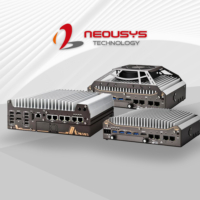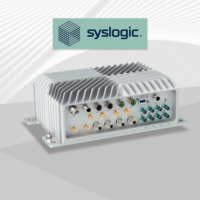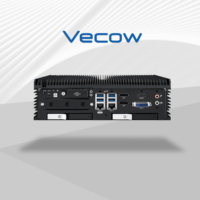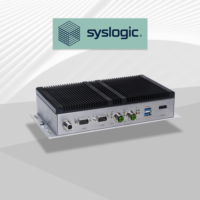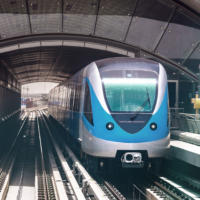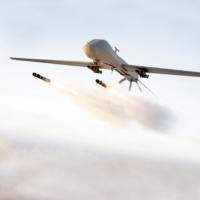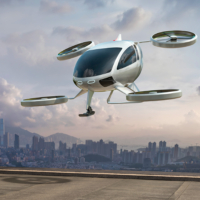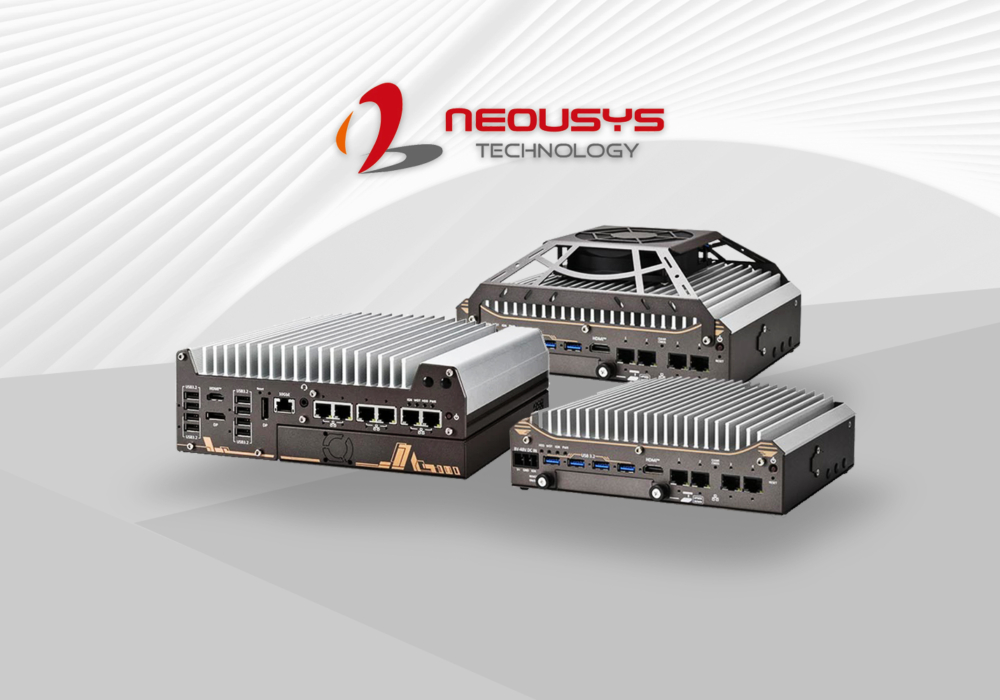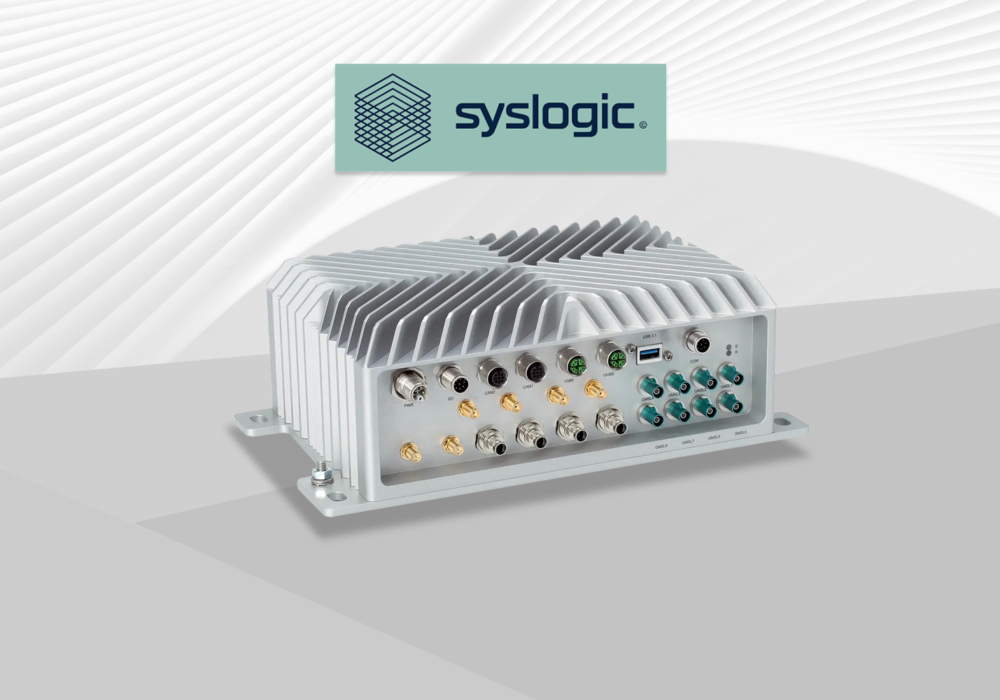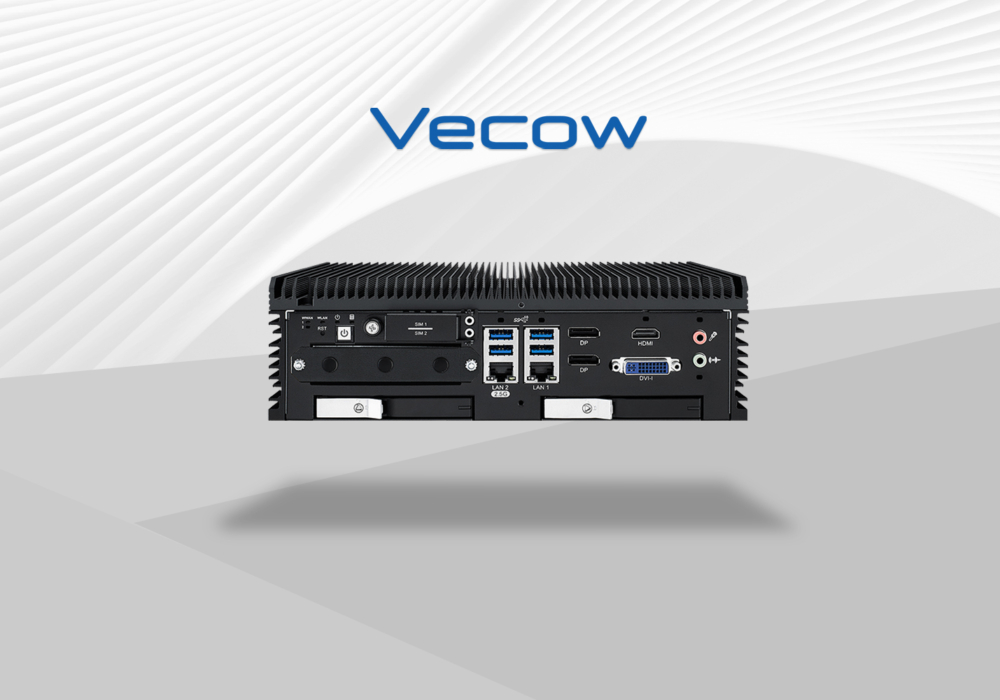In this article:
- Introduction
- What is a Packing Robot?
- How Do Packing Robots Work?
- Robotic Palletizing: From Heavy Lifting to Record-Breaking Performance
- Robotic Case Packing for Enhanced Efficiency
- Automated Box Sealing and Inspection
- Robotic Depanning: Precision and Speed
- The Technology Behind Packaging Robots
- The Future of Packaging Robots
- Training and Maintenance of Packaging Robots
- Integrating Robotics with Existing Systems
- Conclusion
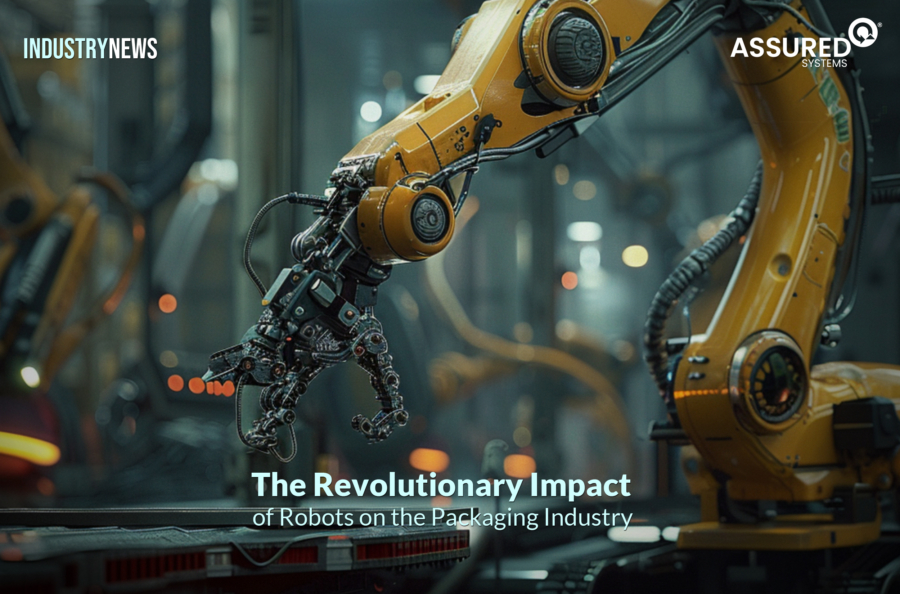
Introduction
The packaging industry is undergoing a significant transformation, largely driven by the integration of robotic technology. From palletising to inspection, robots are revolutionising how packaging tasks are performed, saving companies time and money while reducing physical strain on human workers. Here, we explore the key ways autonomous robots are changing the game in the packaging industry and delve into additional relevant insights, including the type of industrial computing and technology involved.
What is a Packing Robot?
Packing robots are automated machines designed to handle various packaging tasks in factories and warehouses. These robots can pick up products, place them into packages, seal, label, and palletize them for shipping. By automating these repetitive and often strenuous tasks, packing robots enhance efficiency and ease the workload of human employees. While there are concerns about robots replacing jobs, they primarily take over the monotonous tasks, allowing human workers to focus on more complex and fulfilling activities.
The cost of packaging robots varies based on their complexity and capabilities. Basic robots start at around $50,000, while more advanced systems with vision and intelligent palletizing features can range from $75,000 to $250,000 or more. Large industrial systems can cost between $200,000 and $500,000. Despite the high initial investment, companies often see a return on investment within 2-3 years through increased productivity and reduced labour costs.
How Do Packing Robots Work?
Packing robots operate using sophisticated systems that include robotic arms, grippers, sensors, cameras, and advanced software. Here’s a closer look at how they function:
- Robotic Arms and Grippers: The core components, robotic arms and grippers, are designed to move smoothly and handle products with precision. They are assisted by sensors and cameras that provide the necessary data for accurate operation. These arms are capable of reaching wide and far, ensuring that every product is picked and placed correctly.
- Precision Handling: High-quality sensors and cameras enable the robots to handle products gently and accurately, adapting to various package sizes and patterns. The technology ensures that each product is picked and placed just right, avoiding damage and maintaining quality.
- Pathfinding: Robots use vision systems to identify products and determine the best routes for movement, making them increasingly adept at complex tasks. This adaptability allows robots to handle various packaging scenarios, from straightforward tasks to more intricate manoeuvres.
Routine Tasks: Robots excel at performing repetitive tasks reliably and quickly, freeing up human workers to concentrate on higher-value tasks. By taking over the monotonous aspects of packaging, robots contribute to a more efficient and productive workflow.
Robotic Palletizing: From Heavy Lifting to Record-Breaking Performance
Robotic palletizing involves stacking small boxes or packages onto larger pallets for transport and storage. Robots equipped with vacuum or mechanical grippers can palletize boxes at high speeds, significantly outpacing human workers. This not only boosts efficiency but also reduces the risk of workplace injuries from repetitive manual palletizing tasks. Industries such as food and beverage, cosmetics, and pharmaceuticals widely use robotic palletizers to streamline their operations.
Robotic palletizing systems use advanced algorithms to determine the optimal stacking pattern, ensuring stability and maximising space utilisation on pallets. These systems can handle various package shapes and sizes, making them versatile and adaptable to different industries. Additionally, the robots’ ability to work continuously without fatigue makes them ideal for high-volume operations, where consistent output and reliability are crucial.
Many types of companies in the packaging industry employ robotic palletizers, from food and drink producers to cosmetics and pharmaceutical companies. These robots not only enhance operational efficiency but also contribute to a safer working environment by eliminating the risk of injuries associated with manual palletizing.
Robotic Case Packing for Enhanced Efficiency
Case packing, a labour-intensive part of product packaging, is being transformed by robotic technology. Robots can group items into cases, seal them, and move them onto pallets with high speed and accuracy. This automation reduces the physical strain on workers and increases job satisfaction. In high-volume operations, robotic case packers are essential for maintaining efficiency and throughput, packing up to six cases per minute, a rate unattainable by human workers.
Robotic case packing systems utilise advanced vision systems to identify and group products accurately. These systems ensure that each item is correctly positioned within the case, reducing the risk of damage during transit. Furthermore, the robots’ ability to handle various product types and packaging configurations makes them highly flexible and adaptable to different production needs.
In addition to improving efficiency, robotic case packing systems also contribute to better quality control. By automating the case packing process, companies can ensure that each case is packed consistently and correctly, reducing the likelihood of errors and improving overall product quality.
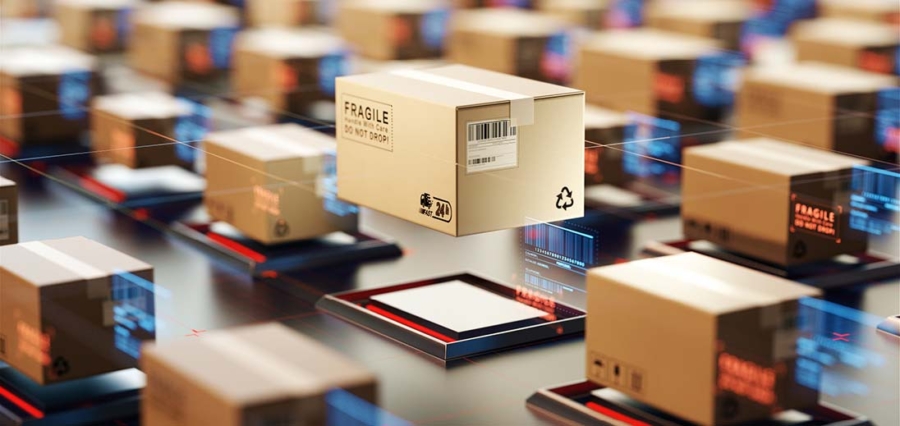
Automated Box Sealing and Inspection
Robotic arms equipped with vision systems and heat sealers can inspect and seal product boxes with remarkable speed and accuracy. They can inspect multiple sides of a box in a single cycle, ensuring consistent quality and reducing product damage and spoilage. Automated inspection systems further enhance quality control by identifying any sealing flaws or packaging errors before shipment.
Robotic heat sealers or box tapers precisely apply tape, glue, or heat to securely seal cartons. They ensure each box is properly sealed to protect the contents inside, while advanced vision guidance systems enable the robots to locate the box edges and seams with high accuracy for an optimised seal. Compared to manual box sealing, robots are faster, more consistent, and help reduce product damage and spoilage.
After sealing, the boxes undergo automated inspection. Vision systems scan each sealed box to check for any flaws or imperfections in the sealing, as well as verify the contents and placement inside the box. This helps identify any boxes that may need resealing or repacking before shipment. Automated inspection massively improves quality control and ensures only properly sealed and filled boxes continue down the line.
Robotic Depanning: Precision and Speed
Depanning involves removing individual products from pans or trays and repacking or palletizing them for shipping. Robotic depanning systems use arms with grippers or vacuum tools to handle products efficiently and accurately. These robots can depan up to 120 cartons per minute, significantly easing the physical burden on human workers and preventing repetitive strain injuries. Depending on the product, robots may be stationary or mobile, adapting to different production environments.
Robotic depanning systems can be customised to handle a wide range of products, from baked goods to electronics. The choice of gripper or vacuum tool depends on the product’s characteristics, ensuring gentle handling and maintaining product integrity. Stationary depanning robots typically remove items from pans as they pass by on a conveyor, while mobile robots move down aisles of stacked pans, depanning each one.
The use of robotic depanning systems not only increases efficiency but also improves the overall quality of the packaging process. By automating this repetitive task, companies can ensure consistent and precise handling of products, reducing the risk of damage and improving overall product quality.
The Technology Behind Packaging Robots
The effectiveness of packaging robots hinges on advanced industrial computing and sophisticated technologies. Here’s a closer look at the components and systems that enable these robots to perform their tasks with such precision and efficiency:
Industrial Computing
- Programmable Logic Controllers (PLCs): PLCs are essential for controlling robotic operations. These industrial computers are designed for real-time control applications and are highly reliable in demanding environments. PLCs manage the robot’s movements, ensuring precise control over tasks such as picking, placing, and palletizing.
- Industrial PCs (IPCs): IPCs provide the computing power required for more complex robotic applications. They are Industrial Computers used for tasks that require significant data processing, such as vision recognition and machine learning, and built to withstand harsh industrial conditions, including dust, vibration, and extreme temperatures.
- Human-Machine Interfaces (HMIs): HMIs allow operators to interact with the robotic systems. These interfaces provide real-time data visualisation and control, enabling operators to monitor and adjust robot performance. HMIs are crucial for troubleshooting and maintenance, making them an integral part of the robotic system.
Sensor and Vision Systems
- 3D Vision Systems: These systems enable robots to perceive their environment in three dimensions, allowing for accurate identification and handling of objects. 3D vision systems are particularly useful in applications that require precise positioning and orientation of products.
- Laser Scanners: Laser scanners are used to create detailed maps of the robot’s working area. This information helps robots navigate their environment and avoid obstacles, ensuring safe and efficient operation.
- Proximity Sensors: Proximity sensors detect the presence of objects near the robot. These sensors are critical for preventing collisions and ensuring that the robot can handle products without causing damage.
Software and Control Systems
- Robotic Operating System (ROS): ROS is a flexible framework for writing robot software. It provides tools and libraries for developing robot applications, including those for packaging tasks. ROS supports modular development, allowing for easy integration of new functionalities.
- Machine Learning Algorithms: Machine learning algorithms enable robots to improve their performance over time. By analysing data from past operations, robots can learn to optimise their movements, enhance accuracy, and adapt to new tasks.
- Simulation Software: Simulation software allows for the virtual testing and optimisation of robot movements. This software helps in designing and fine-tuning robotic systems before they are deployed in the production line, reducing setup time and costs.
Communication and Networking
- Industrial Ethernet: Industrial Ethernet is used for high-speed, reliable communication between robotic systems and other industrial equipment. This networking technology ensures real-time data exchange, which is crucial for synchronising robotic operations with other processes in the packaging line.
- Wireless Communication: Wireless communication technologies, such as Wi-Fi and Bluetooth, are used for remote monitoring and control of robotic systems. These technologies enable operators to manage robots from a distance, increasing flexibility and convenience.
- IoT Controllers: IoT Controllers significantly enhance packaging robots by enabling real-time remote monitoring and control, predictive maintenance, and seamless integration with other systems. They provide advanced analytics for performance optimisation, adaptive operations to adjust to changing conditions, and improved communication between devices. Additionally, IoT Controllers enhance safety through continuous monitoring and alerts, while supporting scalable operations for easy expansion. This leads to greater efficiency, reliability, and flexibility in packaging processes.
The Future of Packaging Robots
The future of packaging robots looks promising, with advancements in artificial intelligence and machine learning driving further improvements in robotic capabilities. Future packaging robots will be even more intelligent, adaptable, and capable of handling more complex tasks with greater precision.
- AI and Machine Learning: Future packaging robots will leverage AI and machine learning to enhance their decision-making capabilities. These technologies will enable robots to learn from their experiences, adapt to new tasks, and optimise their performance over time. For example, AI-powered robots can analyse packaging data to identify patterns and make real-time adjustments to improve efficiency and accuracy.
- Collaborative Robots (Cobots): Cobots are designed to work alongside human workers, enhancing productivity and safety. These robots can assist with tasks that require human dexterity and decision-making, while also taking over repetitive and physically demanding tasks. Cobots are equipped with advanced sensors and safety features, allowing them to operate safely in close proximity to humans.
- Enhanced Vision Systems: Future robots will feature more advanced vision systems that can identify and track products with greater accuracy. These systems will enable robots to handle a wider range of products and packaging configurations, further increasing their versatility and adaptability.
- Sustainable Packaging Solutions: As sustainability becomes a more pressing concern, future packaging robots will play a key role in promoting eco-friendly practices. Robots can help optimise packaging materials, reduce waste, and improve recycling processes. For example, robots can be programmed to use minimal packaging materials while ensuring product protection, reducing the overall environmental impact.
Training and Maintenance of Packaging Robots
The implementation of packaging robots requires proper training and maintenance to ensure optimal performance and longevity. Companies need to invest in training programs for their employees to develop the necessary skills for operating and maintaining robotic systems.
- Training Programs: Training programs should cover the basics of robot operation, programming, troubleshooting, and maintenance. Employees should be familiar with the robot’s components, software, and safety features. Hands-on training sessions can help employees gain practical experience and confidence in working with robots.
- Regular Maintenance: Regular maintenance is crucial for keeping robots in optimal working condition. Companies should establish a maintenance schedule that includes routine inspections, cleaning, lubrication, and calibration. Preventive maintenance can help identify and address potential issues before they lead to downtime or costly repairs.
- Software Updates: Keeping the robot’s software up to date is essential for maintaining its performance and security. Companies should regularly check for software updates and install them as needed. Software updates can provide new features, improve performance, and address any security vulnerabilities.
Integrating Robotics with Existing Systems
Integrating robotic systems with existing packaging processes can be challenging, but it is essential for maximising the benefits of automation. Companies need to carefully plan and execute the integration process to ensure a smooth transition.
- Assessment and Planning: Before implementing robotic systems, companies should conduct a thorough assessment of their current packaging processes. This assessment should identify areas where automation can provide the most significant benefits. Based on the assessment, companies can develop a detailed integration plan that outlines the steps, resources, and timeline required for successful implementation.
- System Compatibility: Ensuring compatibility between robotic systems and existing equipment is crucial for a seamless integration. Companies should work with robotic system providers to select robots that are compatible with their existing infrastructure. This may involve making modifications to existing equipment or investing in new equipment that supports robotic integration.
- Pilot Testing: Conducting pilot tests can help identify any issues and make necessary adjustments before full-scale implementation. During the pilot testing phase, companies can evaluate the robot’s performance, identify any bottlenecks, and make improvements to optimise the integration process.
- Continuous Improvement: The integration of robotic systems should be an ongoing process of continuous improvement. Companies should regularly monitor the performance of their robotic systems, gather feedback from employees, and make necessary adjustments to enhance efficiency and productivity.
Conclusion
Robots in the packaging industry are enhancing efficiency, reducing costs, and improving working conditions. For businesses considering automation, investing in robotic technology can lead to significant operational improvements. Whether it’s palletizing, case packing, box sealing, or depanning, there’s likely a robot designed to handle the task, making the future of packaging both exciting and promising.
The integration of robotic technology in the packaging industry represents a significant step forward in terms of efficiency, safety, and sustainability. As technology continues to advance, the capabilities of packaging robots will only improve, offering even greater benefits to companies and workers alike. By embracing these innovations, the packaging industry can look forward to a future where tasks are performed with unparalleled precision and efficiency, leading to higher productivity, reduced costs, and improved working conditions.
